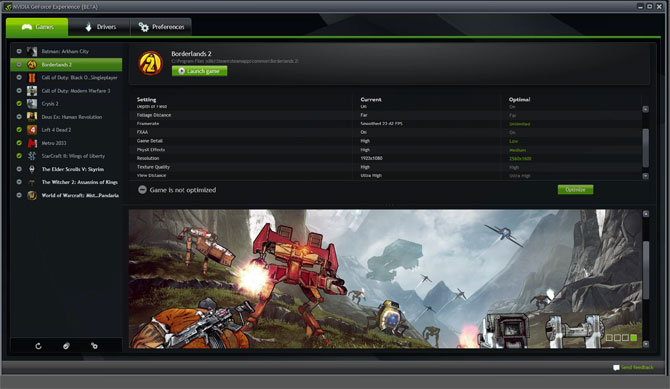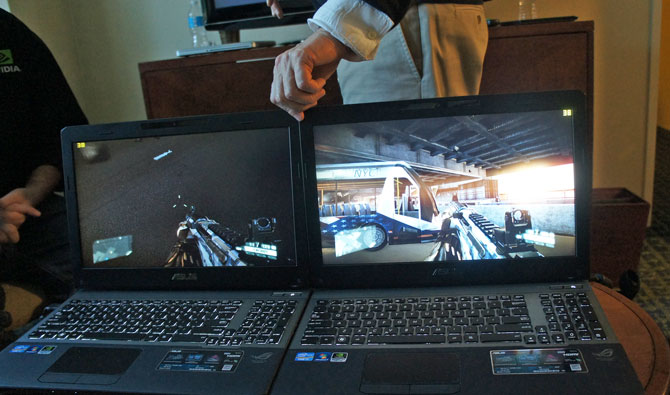Nvidia GeForce Experience Software Optimizes Your Game Settings
Any serious player worth his XP knows that using a games' default settings is a recipe for poor performance. Developers simply don't have time to test every possible PC configuration so they go for the lowest common denominator in their factory settings, either providing worse image quality and special effects to make sure that the game is playable on lesser hardware or keeping the special effects on at the expense of smooth movement. Enter Nvidia GeForce Experience, a new application that reads your system hardware and recommends truly optimal settings for popular games, based on your computer's unique set of hardware.
GeForce Experience leverages Nvidia's extensive database of game test data to ensure that you get every light effect, complex texture and physx effect your combination of CPU, video card and memory can provide while still giving you at least 40 frames per second. When you launch the software and select the game title you wish to optimize, GeForce Experience shows you a list of all your current settings and its list of recommendations. You can either accept all the recommendations and hit a button which will change them for you or tweak them yourself.

The software also provides a brief explanation of each setting as you hover over it with your mouse. Considering that, even among hardcore gamers, few people know what obscure functions like Anisotropic texture filtering actually do, these definitions can be really helpful for users who want to experiment with the settings on their own.

As part of its video card business, Nvidia does pre-release testing on most of the top titles before they come out and works closely with developers to make sure their games work well on a ton of different hardware configurations. To make GeForce Experience work, the company created a special team that takes the testing to another level, identifying target levels of graphics quality, developing special scripts to play through some of the most demanding areas and then feeding the games into huge server farms that use a complex algorithm to come up with recommendations. The client software accesses these servers every time it makes a recommendation.
In a brief demo, Nvidia's Matt Widener showed us the huge difference between default settings and GeForce Experience recommended settings in several demanding titles. In Borderlands 2 at default settings, stones on the ground were blurry and a pond was nothing more than a dry stone indentation, but with the recommendations, the ground had detailed textures and water flowed from the pond. In Call of Duty World at War 3 at default settings, a street scene was dark with textures so blurry that the numbers on a wrist watch were illegible. With the GeForce Experience settings, colors were brighter, light reflected off of our gun scope and the numbers on the watch were sharp and clear.

When Widener fired up Crysis 2, the default settings resulted in an unplayable framerate of just 20 fps and an image that took up only part of the screen. With the the GeForce Experience recomendations, the frame rate jumped to 40 fps while the quality of the images and special effects remained similar.
The GeForce Experience software also checks for new video drivers and automatically downloads them. So as long as you keep it running, your Nvidia video card will always provide the latest performance tweaks. You can even set the software to check for and download beta drivers.
Stay in the know with Laptop Mag
Get our in-depth reviews, helpful tips, great deals, and the biggest news stories delivered to your inbox.
GeForce Experience is entering private beta today, with 10,000 available tester spots and support for over 30 popular game titles, and a goal of reaching over 100 titles in the near future. In early 2013, Nvidia expects to launch the software as a free download for all users of recent Nvidia GPUs (Fermi and Kepler generation) on laptops or desktops.

